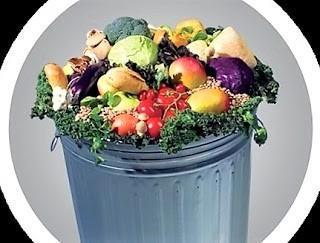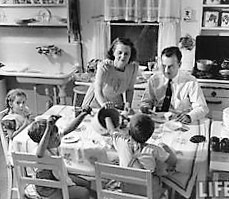CAST to Release Comprehensive Paper on FIFRA and ESA at the CropLife & RISE Regulatory Conference
According to many studies and abundant Internet buzz, food waste is both a culprit and an opportunity. While many say we are wasting more than ever (see excerpt below about the “old days”), efforts are now focused on cutting loss and waste. In an effort to reduce malnutrition, increase sustainability, and promote environmental policies, new programs are underway that produce immediate payoffs and bode well for the future.

First, recent studies: Pennsylvania State University experts say U.S. households are wasting nearly one-third of the food that they buy. A similar study from Dutch researchers points out that common estimates for global food waste are too low. The Council for Agricultural Science and Technology published an issue paper that addressed this topic: Food Loss and Waste.
Along with companies, organizations, and individuals, many universities are working on the problem. A few examples include: (1) A group of students at The Ohio State University is working towards reducing, repurposing, and educating about food waste on campus, (2) Penn State University students are partnering with a local food bank to help bridge the gap between food waste and food insecurity, (3) at Cal Poly, the Campus Dining Group strives to reduce the environmental impact on campus, and (4) a University of Kentucky program established Green Thread, an environmental sustainability platform.
Why We Wasted Less in the “Good Old Days”—Or Did We?
A “drive-thru” of the Internet will bring you a smörgåsbord of statistics regarding world hunger and food waste, but one line that caught my attention made we wonder how (and if) things have changed since I was a youngster on the farm. According to the National Institute of Health, American consumers waste 50% more food now than in 1970.

So what was different about those days before McFastFood, processed gourmet items, and mega supermarkets? Maybe it’s because when we sat at the family table we had slow food, farm produce, and whatever the little grocery store in town had on special. Maybe we just didn’t have the opportunities to waste as much. A few points to consider:
#1 We usually had similar items at each meal—meat, potatoes, bread, and a vegetable. When referring to his assembly line cars, Henry Ford supposedly said that customers could have any color they wanted as long as it was black. After Dad had one of our steers in the feedlot butchered, we could have any meat type we wanted as long as it had once “mooed.”
#2 The small-town grocers also had limited choices back then. The cereal aisle was not a kaleidoscope of colors and cartoon characters. “Do you want Cheerios or Wheaties?” Mom might ask. Coco Puffs, Lucky Charms, and Count Chocula had yet made it to our breakfast tables.
#3 Fruits and veggies were seasonal. I had never tasted papaya until my wife and I went to California on our honeymoon. As kids, when our strawberry patch was ready, we had red-stained fingers for a month, and if you went to the work of digging carrots in the garden, you ate even the “ugly” ones. When we sat down to eat in late summer, the “vegetable du jour” was invariably sweet corn on the cob.
#4 There were no “sell by” or “use by” dates on items. Nothing stayed in the fridge long enough to get fuzzy with mold, and most folks just used the sniff test and a bit of common sense to avoid tainted food. At school, you could tell the milk was off if it came chunky style out of the waxed carton. Some of the kids joked that the food was “World War II surplus,” but we were too busy yelling and acting like the Three Stooges to worry about foodborne illnesses.
#5 Most families had a “clean your plate” policy. Some had the strict “If you don’t eat your meat, you can’t have any pudding” edict, while others used pathos with the line about starving kids in the world. One old relative used to lick his plate clean, turn it over, and say that it was fine to leave there until the next meal.
#6 “Whole food” meant that most items were fully used. For example, the hog butchers claimed that “the only part of the pig not processed was the squeal.” If there were leftovers, we ate them later or they ended up in a mystery casserole. We also had built-in disposal systems—hogs, dogs, and cats. As Dad says, “Our chickens would eat anything from orange peels to sawdust.”
I’m not convinced we were that much better at food use when I was a grade school kid in the early ’60s, but things were certainly easier then. We didn’t have so many choices; we knew where our food came from and what it was; and we had less waste at the end of each meal. Even those peas my brothers and I flicked at each other across the table when the folks weren’t looking served their purpose.
By Dan Gogerty
Top image from leanpath.com
Bottom image form lifemag.com
Your donation to CAST helps support the CAST mission of communicating science to meet the challenge of producing enough food, fiber and fuel for a growing population. Every gift, no matter the size, is appreciated.